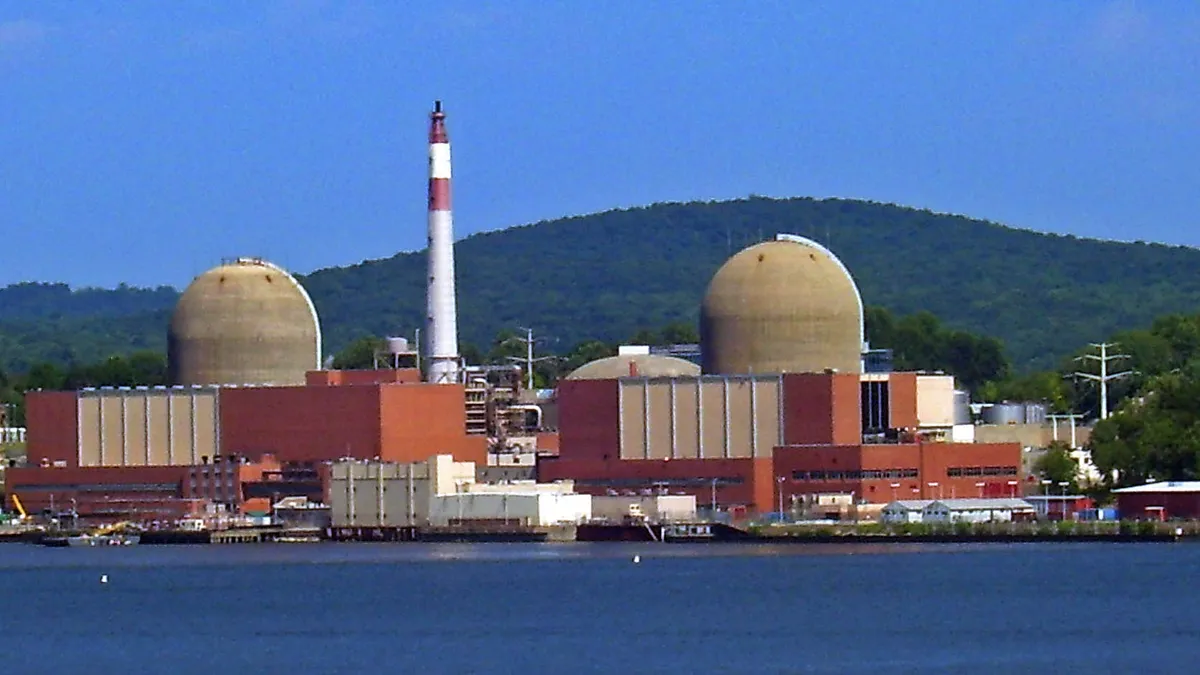Dive Brief:
- Increased energy efficiency and transmission upgrades to bring in more renewable power can help replace a nuclear plant north of New York City, according to a new report released by two environmental groups.
- New analysis performed by Synapse Energy Economics shows that lower demand and more solar and wind energy can help the state replace the power from the Indian Point nuclear facility with clean energy options that will not raise consumer bills.
- Under an agreement between the state and plant operator Entergy, the Indian Point nuclear facility will shut down by 2021.
Dive Insight:
Last month's announcement that Entergy would shut down its Indian Point plant was a win for nuclear opponents, who for years have been wary of a plant within 30 miles of the nation's largest metropolitan area.
The news, however, left open the question of how to continue to power the the city without turning to fossil fuels.
Now, green groups say they believe the city that never sleeps can keep the lights on — all night and every day — using only carbon-free generation.
New research from Synapse Energy, released by the Natural Resources Defense Council and Riverkeeper, finds additional solar and wind power, along with energy efficiency gains, can power the city. But that goal also depends on the construction of the Champlain Hudson Express transmission line, which would move 1,000 MW of hydropower from Quebec to the city.
"Recent transmission improvements — coupled with energy efficiency gains, cheaper renewables and lower demand estimates — show that New York is already on its way to a reliable, affordable, clean energy future," Riverkeeper President Paul Gallay said in a statement.
He said the report shows that when Indian Point closes in 2021, "that power can be replaced entirely with clean sources as long as we take advantage of the additional renewable energy and efficiency options available to us."
Key findings in the report show the Indian Point retirement will add less than 1% to overall wholesale electric system costs, and retail impacts will be even smaller. The state's 50% renewables goal is expected to drive the addition of both utility-scale and distributed solar, as well as both offshore and traditional wind generation.
The Indian Point closure announcement came after years of pressure to retire the plant from anti-nuclear activists and the administration of New York Gov. Andrew Cuomo (D).
In 2015, the state rejected a water use permit for the plant, leading Entergy to file a lawsuit alleging that the state's objections were actually based on safety concerns, not environmental qualms. While the company conceded some safety concerns were valid, they argued those issues are regulated by the federal government and not the state.
While it has pushed for Indian Point's closure, Cuomo's administration has also sought to keep other New York nuclear plants online. The governor's office supported approval of zero-emission credits to support three upstate plants last year. Those subsidies are being challenged in court by independent generators.














